- TOP
- Prayers Offered by Emperor Fushimi
Overview
Important Cultural Property
Prayers Offered by Emperor Fushimi
- Museum No.
- BK315
Showing 1-6 of 9
| Title | Prayers Offered by Emperor Fushimi |
|---|---|
| Designation | Important Cultural Property |
| Artist | Emperor Fushimi |
| Category | Calligraphy(B), Japanese Calligraphy, Documents |
| Country | Japan |
| Period | Kamakura |
| Century | 14th |
| Year | 1313 |
| Quantity | |
| Materials | |
| Dimensions | Height 34.5cm Width 650cm |
| Inscription by | |
| Signature/Seals Etc | |
| Donor | Moriya Yoshitaka |
This object may be one within a set or the title of a set. To see all objects in the set, perform a Category Search by the Museum Number below, entering numerals only before the hyphen.

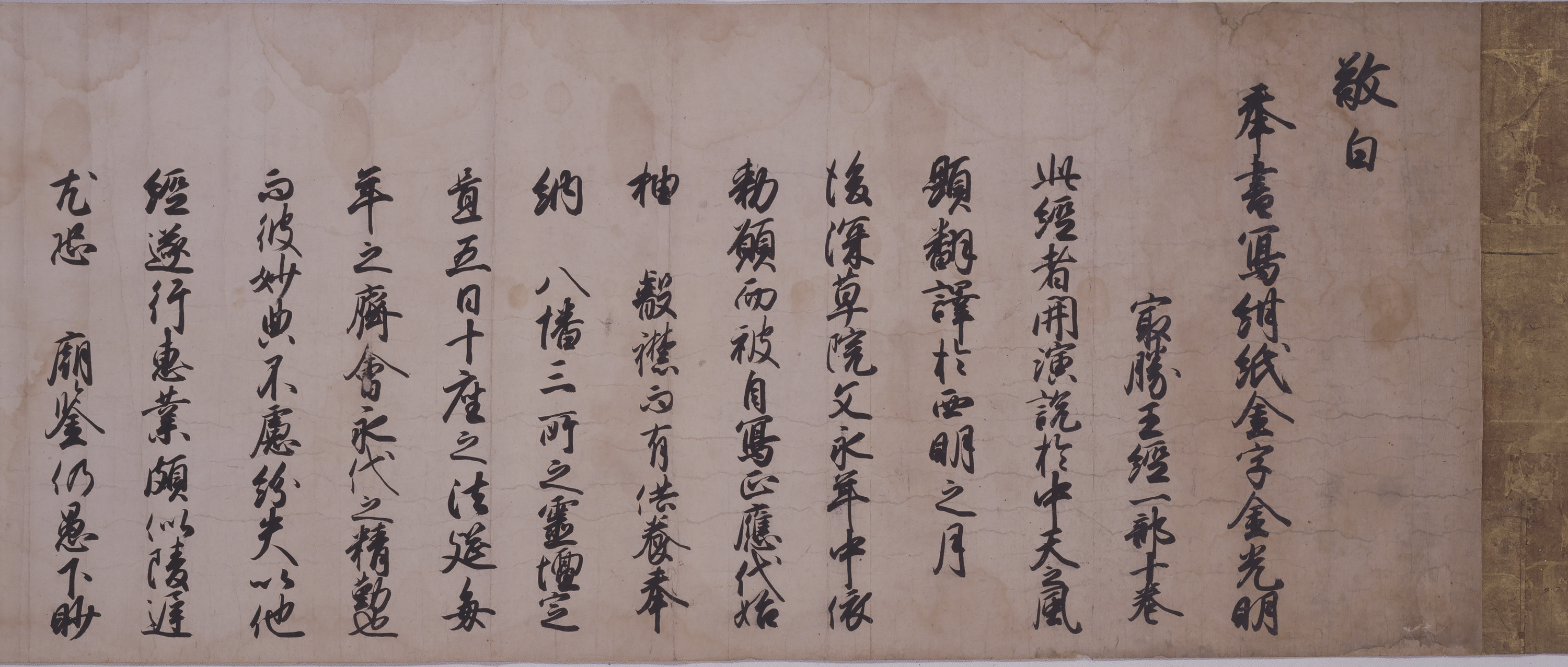










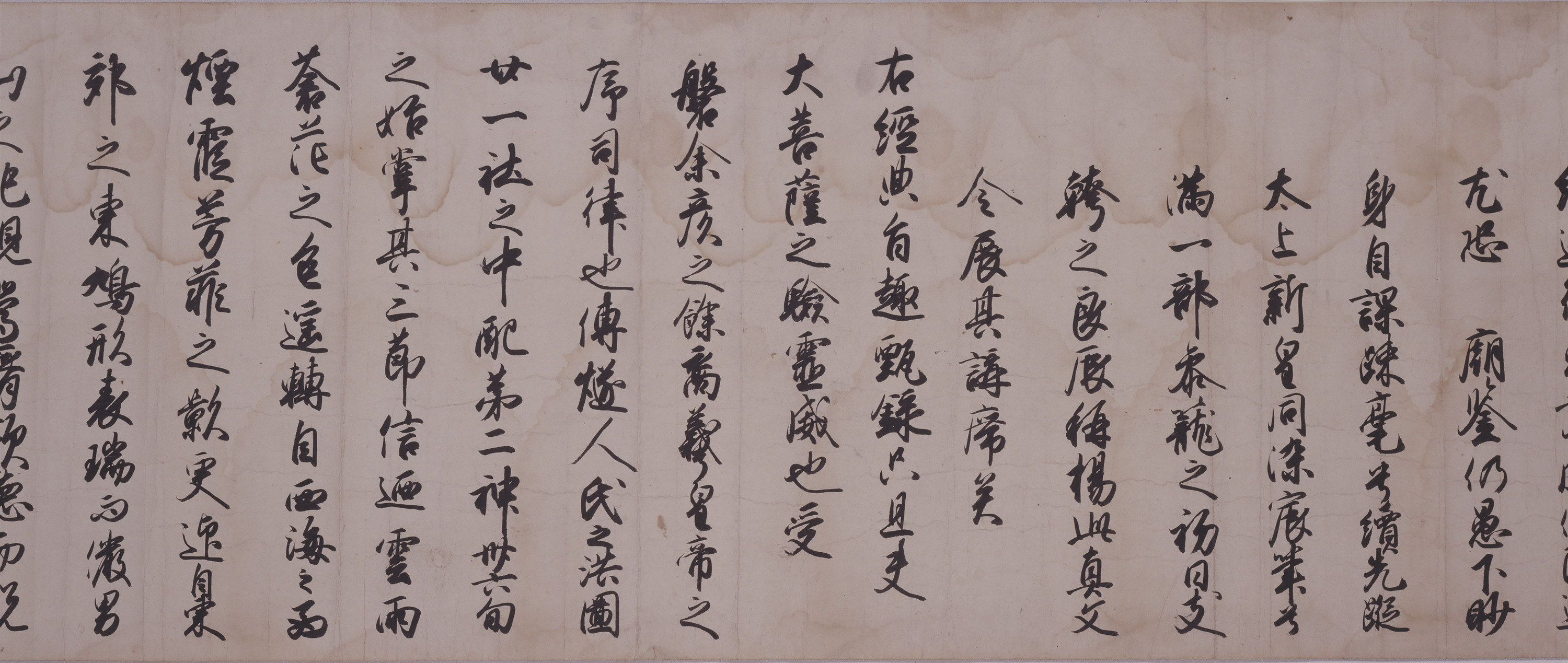


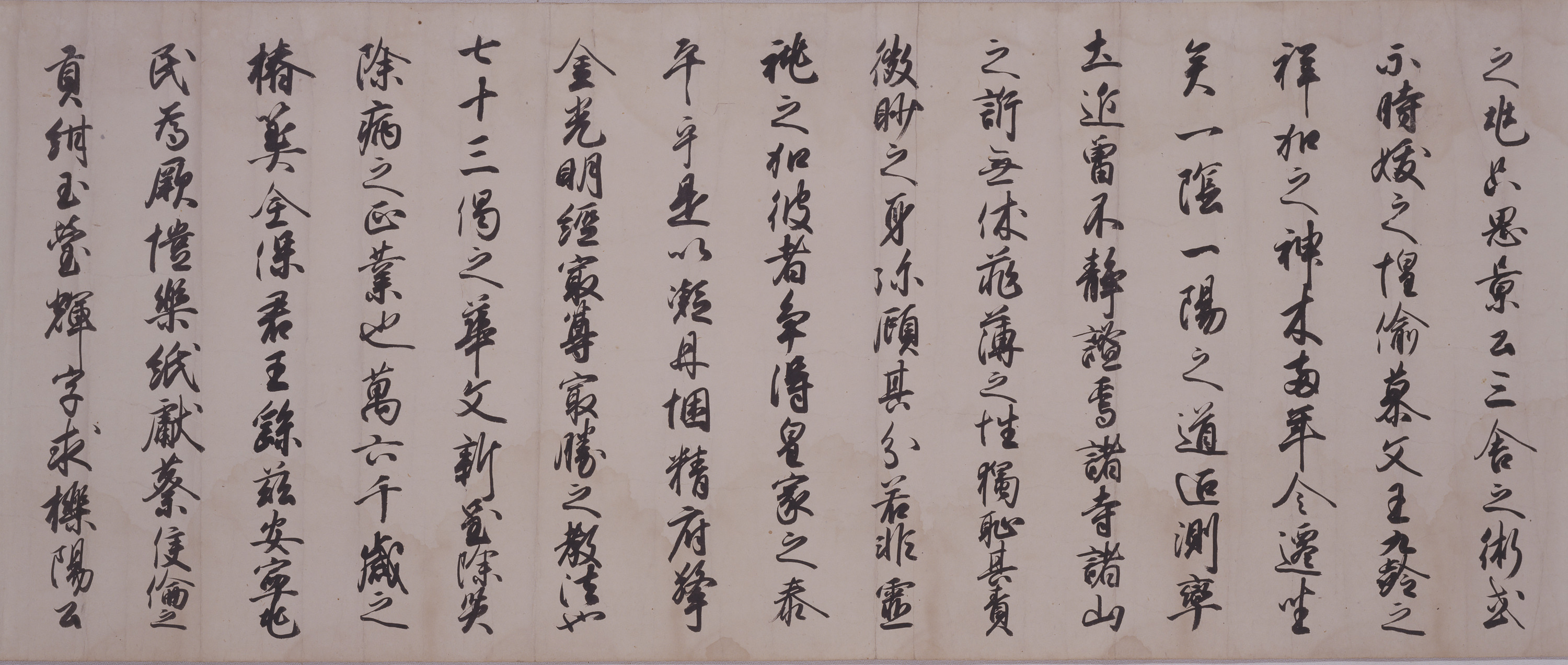
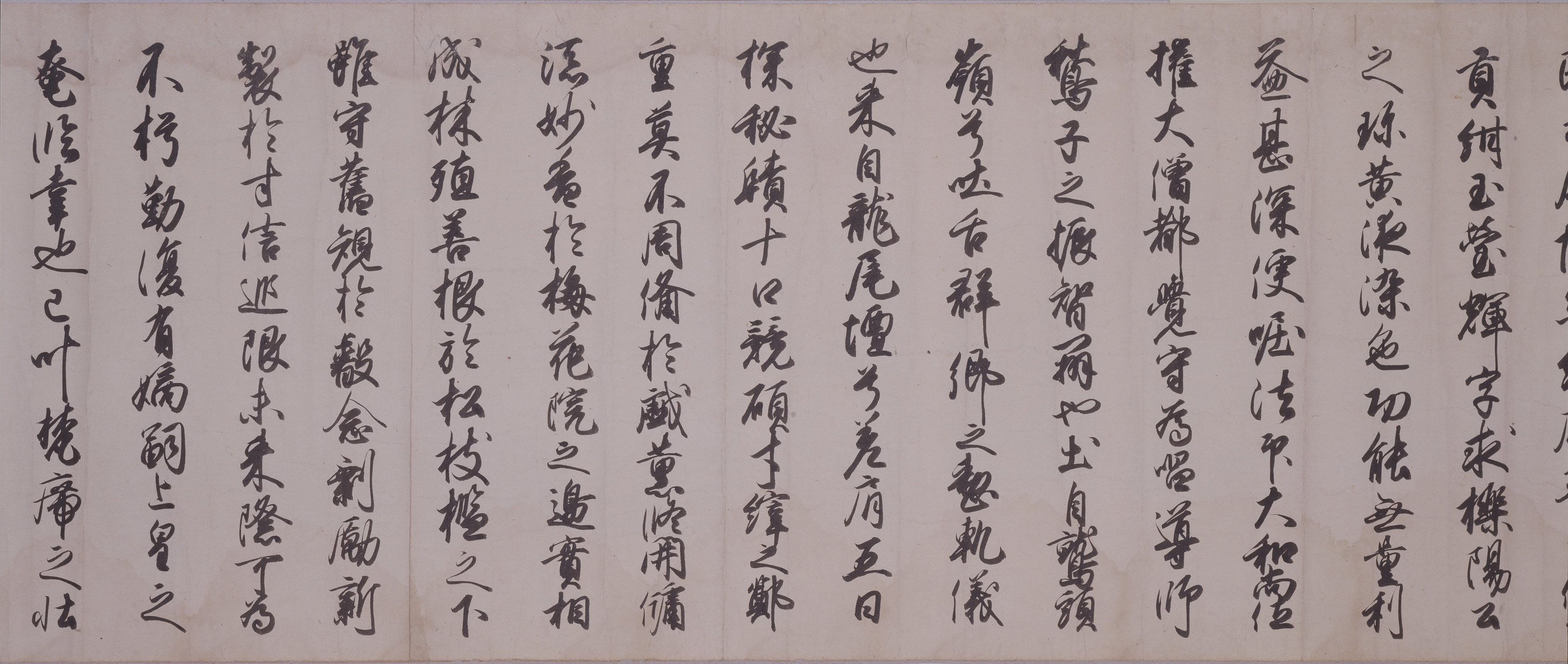
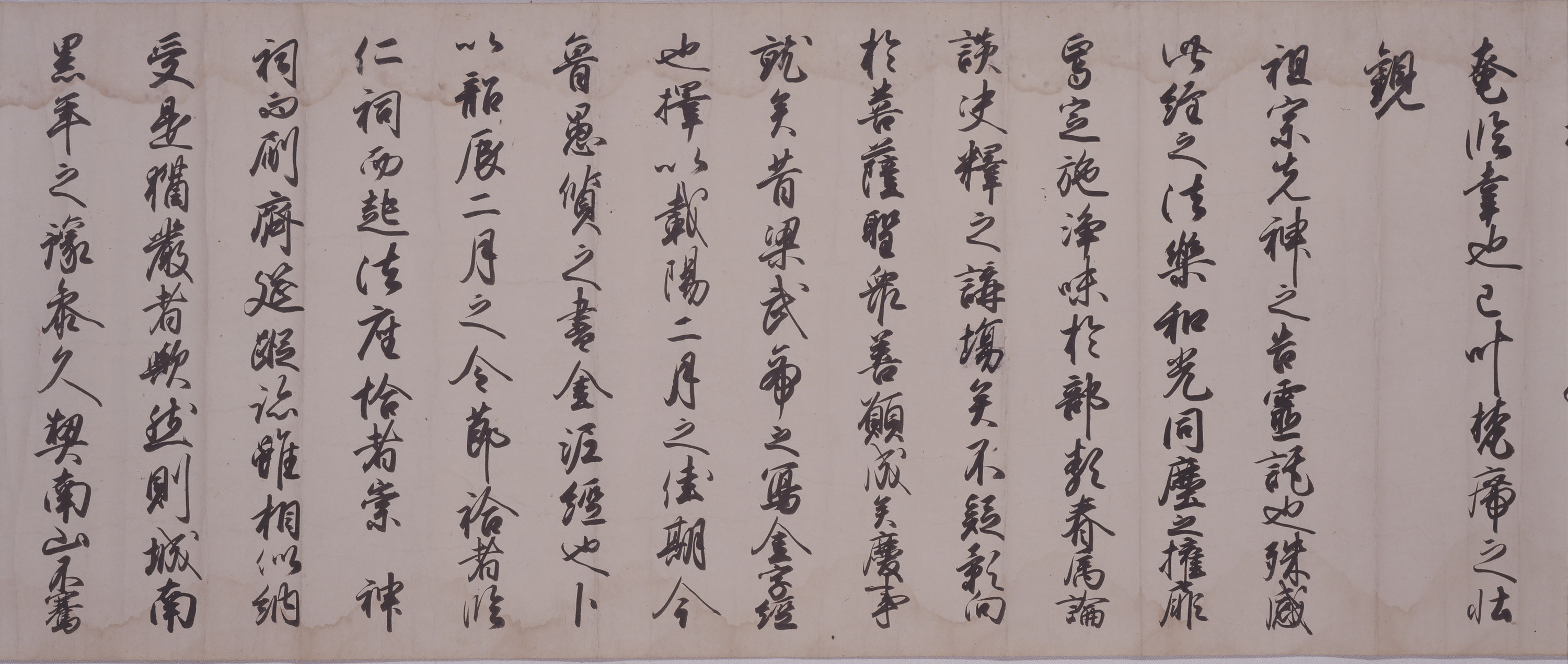
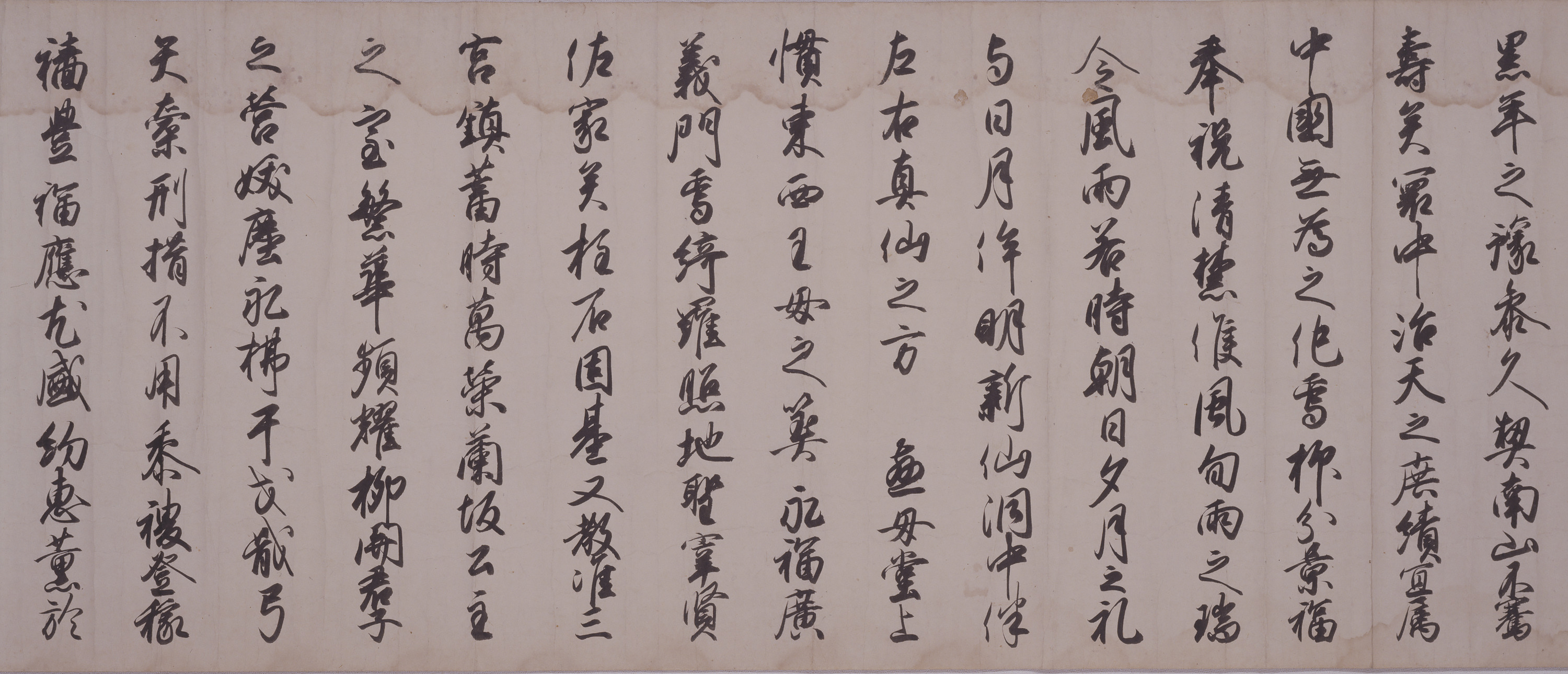
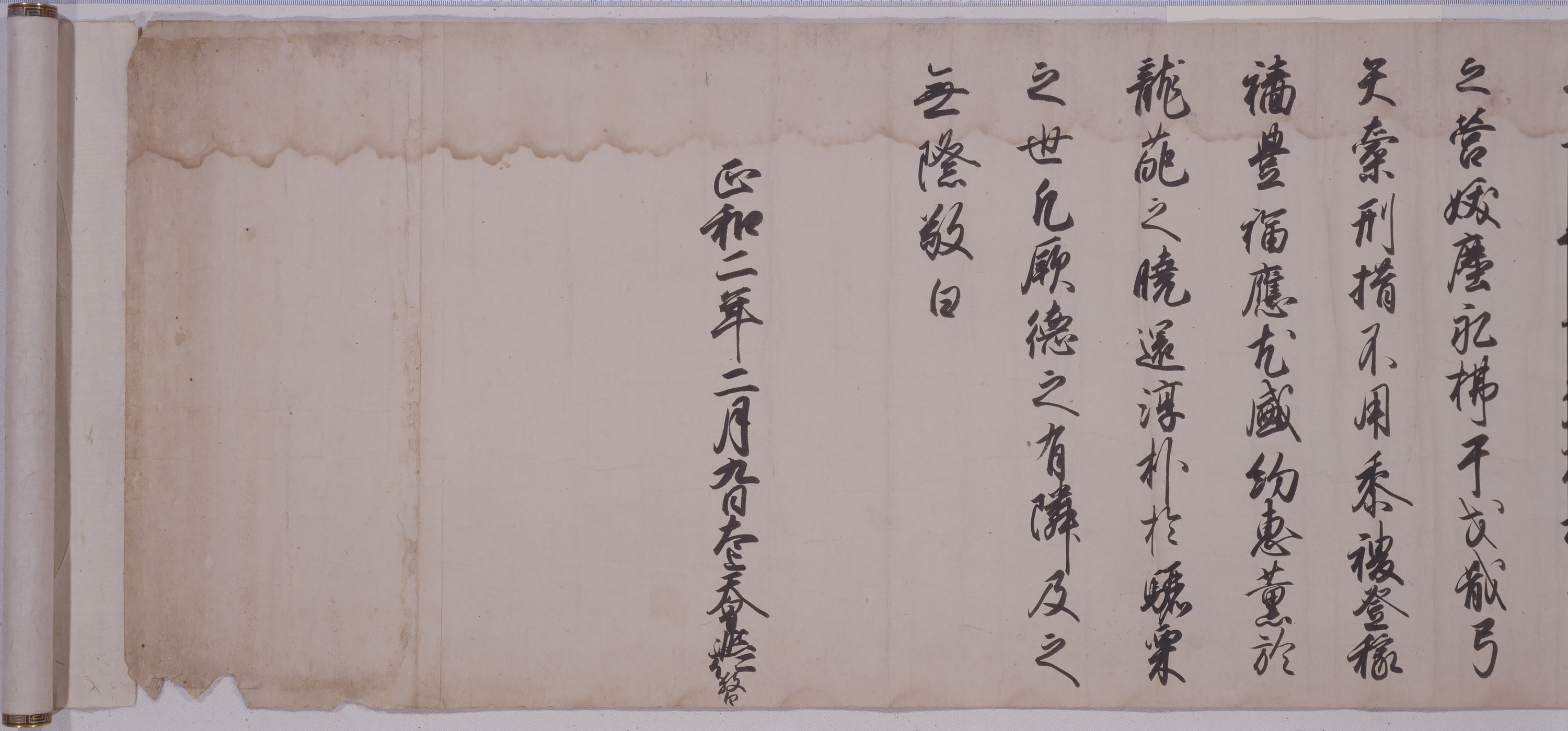













Emperor Fushimi (1265-1317, r. 1287-98), the son of Emperor Gofukakusa (1243-1304, r. 1246-59), ascended the throne after Emperor Gouda (1267-1324, r. 1274-87) of the Daikaku-ji line. He was accomplished in waka ("Japanese poem") composition and known for his mastery of calligraphy. In particular, he was skilled in jôdai ryû ("archaic style") calligraphy, and his style, which became known as Fushimi-in ryû in later years, had a great influence on later generations. These prayers with ten volumes from The Most Victorious Kings Sutra in Gold Lettering on Dark Blue Paper (J., Konshi kinji saishôôkyô) were offered to Iwashimizu Hachiman Shrine by Emperor Fushimi when he and his son, Emperor Gofushimi (1288-1336, r. 1298-1301), confined themselves within the shrine in 1313 (Shôwa 2). The calligraphy is masterful with flowing and elegant lines.
Japan-Kamakura